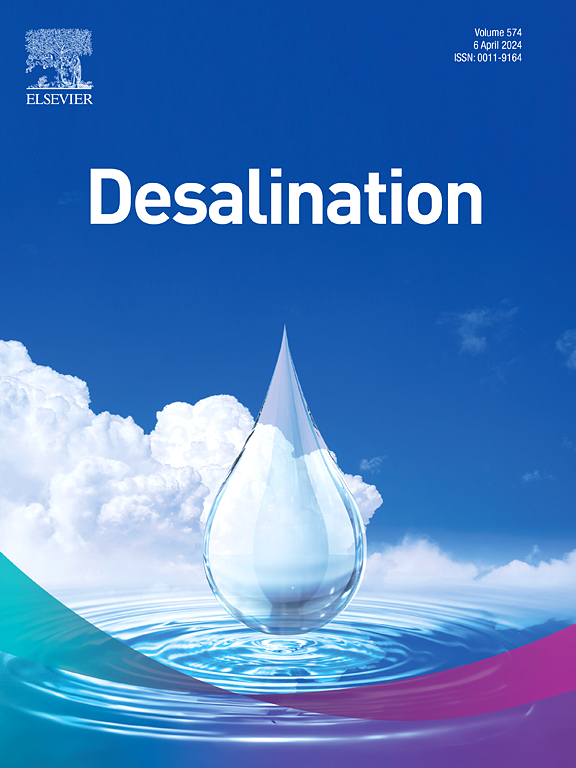Molecular dynamics simulations of Li+/Mg2+ separation using hydroxyl modified PVDF under applied electric field
IF 9.8
1区 工程技术
Q1 ENGINEERING, CHEMICAL
引用次数: 0
Abstract
The green and efficient separation of Li+/Mg2+ is a pressing challenge in the extraction of Li+ from salt lake brine. A transport model for Li+/Mg2+ in an –OH modified PVDF polyelectrolyte membrane was established. The effects of electric field strength, solution concentration, and the number of charging groups on the flux of Li+/Mg2+ and ion selectivity were calculated using non-equilibrium molecular dynamics. The migration mechanism for Li+/Mg2+ was elucidated by analyzing the parameters such as interaction energy, coordination number, and mean square displacement. The results showed that as the solution concentration increased, the fluxes of Li+/Mg2+ through the membrane decreased, while the selectivity for Li+ increased. It is necessary to increase the electric field strength to enhance the separation of Li+/Mg2+. The strong interaction energy between Li+/Mg2+ and the polyelectrolyte chains led to dechlorination and dehydration during transmembrane migration, especially in high concentration systems. The separation factor initially increases and then decreases as the number of –OH groups increases. Additionally, higher temperatures accelerate the diffusion of Mg2+ within the membrane, leading to a decrease in Li+ selectivity. Therefore, it is crucial to maintain the system temperature in the range of 298 K to 308 K. This work provides valuable theoretical insights for the design and separation strategies of high-performance ion exchange membranes.
外加电场作用下羟基改性PVDF分离Li+/Mg2+的分子动力学模拟
如何实现Li+/Mg2+的绿色高效分离是盐湖卤水中Li+提取面临的紧迫挑战。建立了Li+/Mg2+在-OH改性PVDF聚电解质膜中的输运模型。利用非平衡分子动力学计算了电场强度、溶液浓度和充电基团数目对Li+/Mg2+通量和离子选择性的影响。通过对相互作用能、配位数、均方位移等参数的分析,阐明了Li+/Mg2+的迁移机理。结果表明,随着溶液浓度的增加,Li+/Mg2+通过膜的通量降低,而对Li+的选择性增加。为了促进Li+/Mg2+的分离,有必要增加电场强度。Li+/Mg2+与多电解质链之间的强相互作用能导致跨膜迁移过程中的脱氯和脱水,特别是在高浓度体系中。随着-OH基团数量的增加,分离因子先增大后减小。此外,较高的温度加速了Mg2+在膜内的扩散,导致Li+的选择性降低。因此,保持系统温度在298 K到308 K的范围内是至关重要的。这项工作为高性能离子交换膜的设计和分离策略提供了有价值的理论见解。
本文章由计算机程序翻译,如有差异,请以英文原文为准。
求助全文
约1分钟内获得全文
求助全文
来源期刊

Desalination
工程技术-工程:化工
CiteScore
14.60
自引率
20.20%
发文量
619
审稿时长
41 days
期刊介绍:
Desalination is a scholarly journal that focuses on the field of desalination materials, processes, and associated technologies. It encompasses a wide range of disciplines and aims to publish exceptional papers in this area.
The journal invites submissions that explicitly revolve around water desalting and its applications to various sources such as seawater, groundwater, and wastewater. It particularly encourages research on diverse desalination methods including thermal, membrane, sorption, and hybrid processes.
By providing a platform for innovative studies, Desalination aims to advance the understanding and development of desalination technologies, promoting sustainable solutions for water scarcity challenges.
 求助内容:
求助内容: 应助结果提醒方式:
应助结果提醒方式:


